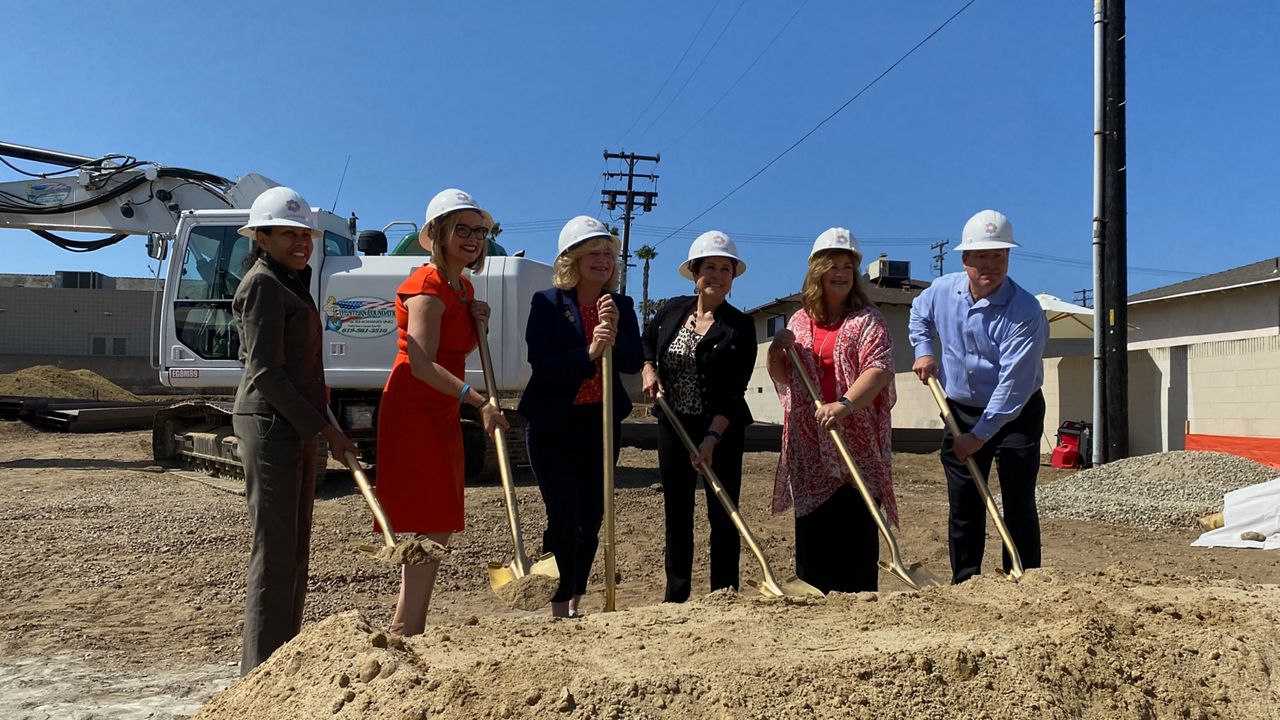HUNTINGTON BEACH, Calif. — In the L-shaped lot full of loose, tawny dirt, a collection of nonprofit leaders, bankers and elected officials took shovels full of dirt and tossed them into the air like confetti.
It was the celebratory groundbreaking of a new Huntington Beach low-income and homeless housing project, uniting resources from the county, the city of Huntington Beach, the state of California, loans and bartered tax credits.
The project at 18431 Beach Blvd. in Huntington Beach has been shepherded by Irvine based nonprofit Jamboree Housing Corporation.
Homeless living in parks, on benches, or camped in their cars may all have different needs. Some may already be on disability, others may need it. Some may work part-time but can’t muster enough for a down payment. Others may not have had a job for years. That means affordable housing has a range of options to accommodate a variety of needs.
The new site, Huntington Beach Seniors, will be constructed in a look that fits the area, utilizing a craftsman-style architecture. At four stories tall and 3,800 square feet, it will get 33 seniors out of homelessness, plus nine units set aside for low-income seniors. The total cost of the project, which is expected to open in late 2023, will be $30 million. The .78 acre lot near 5 Points will include a 2,300-acre outdoor area and pet park.
“These are the kinds of developments we need,” said Katrina Foley, the county supervisor who, after redistricting, is now in the 5th District.
Orange County has charted an overall decrease in homelessness in its point-in-time counts.
However, the count shows that the number of homeless seniors in the county went up from 612 in 2019 to 718 in 2022. That trend concerns officials who say California’s senior population is only going to grow.
County politicians say that illustrates the need for more developments and for each one to include services that can prevent the tenants from going back to the streets, public parks or their cars.
As essential as the units themselves are the wraparound services that come along with it. That means caseworkers, transportation or counseling — whatever the residents need to keep them from winding back out on the streets.
The hurdles to making these developments can be many and take years to overcome. Residents regularly oppose affordable housing and homeless shelters, including in the Orange County coastal towns like Huntington Beach. Some complain about the added density or that these complexes could dent property values. Others site safety concerns.
“It takes a long time to get the money,” said Huntington Beach Mayor Barbara Delgleize. “Sometimes, there are three or five owners of a lot, but Jamboree knows how to work that out.”
City officials are often hedged in between the need to house homeless people, who will otherwise occupy sidewalks or public parks, and sometimes white hot opposition over new building projects that house people on the streets or at risk of going there. And planning can take years. Cities have to identify locations for affordable housing, agree on them and then find the money to purchase them, or a partner like Jamboree who can lead the way.
“I would like to see one of them go up every year,” said Delgleize.
That’s not likely to happen, even as state mandates pressure cities to push up affordable housing numbers, allowing a range of tools for local municipalities to use. Among them are state dollars, and the loosening of ordinances for “granny flats,” otherwise known as Accessory Dwelling Units. But those units are largely built by homeowners who may be reluctant to take on a tenant without a recent job history or income.
Voucher programs were meant to help speed the process but have encountered reluctance from landlords who worry about renting to people who may not have credit, savings or a regular income.
That makes the purchase of land and the acquisition of hotels for later use by low-income residents even more important.
“If you don’t identify sites or don’t progress toward development, then the state is going to take away local control,” said Laura Archuleta, president and CEO of Jamboree.
She said cities have numerous tools for solving the homelessness crisis, including tagging new developments with some required number of affordable housing units. Cities can also wave planning fees and seek state and federal dollars. That includes a chunk from the anticipated $97 billion surplus the state has forecasted.
“We anticipate a billion or two coming to affordable housing,” Archuleta said.
